
After a decade of construction, the Panama Canal opened to traffic on August 15, 1914. Dubbed one of the seven wonders of the modern world, the canal helped to significantly cut down on the travel time between the Atlantic and Pacific Oceans.
Proposals for a canal across Nicaragua or Panama began as early as 1889. United States’ public opinion of the canal was generally unfavorable until 1898, when the battleship Maine blew up at a Cuban naval base. As the Spanish-American War loomed, the battleship Oregon sailed through San Francisco’s Golden Gates to save the day. The eyes of the world were on its 16,000-mile course around Cape Horn and through the dangerous Strait of Magellan. The 67-day journey clearly showed the military significance of an isthmian canal. However, President McKinley was assassinated before he could negotiate rights to a canal.
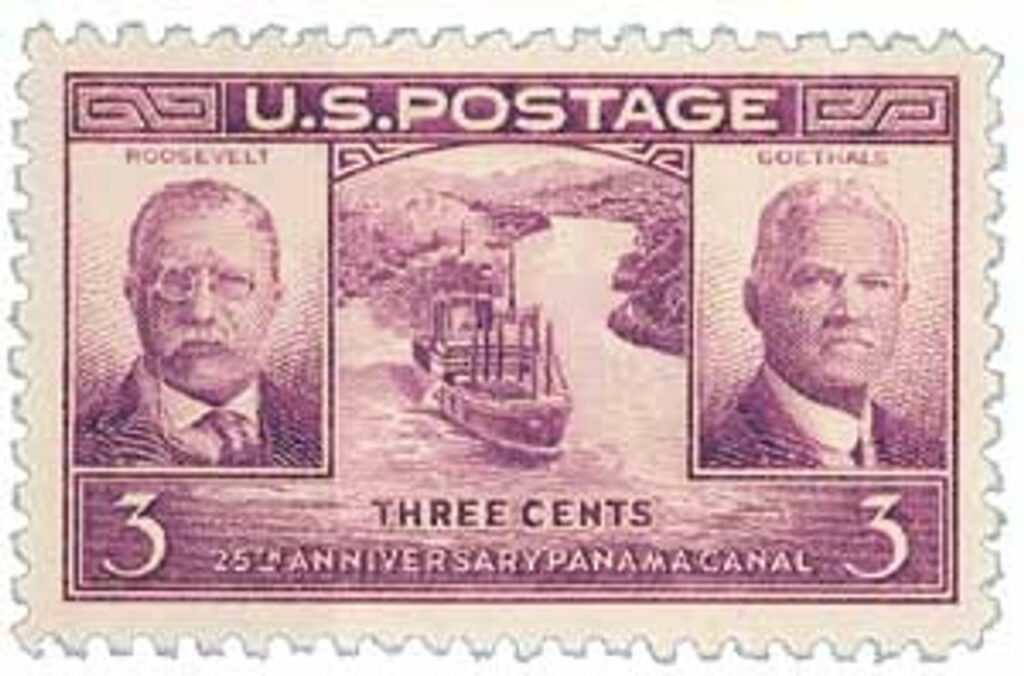
Successor Theodore Roosevelt saw the canal as vital to America’s role as a global power. With negotiations underway in both Nicaragua and Panama, Roosevelt’s strained relationship with Columbia and the asking price of $100 million for the Panama venture could have tipped the scales in favor of a Nicaraguan canal. However, a Nicaraguan postage stamp picturing a volcano was sent to every US senator, stating it could cause problems, and that Panama had no volcanoes. This helped persuade the US Senate’s decision. Construction began in 1904.
Almost immediately, administrators began preparations for the tremendous influx of people who would eventually assemble to work on the project. Faced with the knowledge that most of the work force would be imported to the region from America and Caribbean countries, authorities quickly established a postal service to serve their needs as well as those of the Canal Commission. A postal service was established in June 1904, using Panama stamps overprinted “Canal Zone.” Later, US stamps were overprinted, and eventually brand-new Canal Zone stamps were produced.
In November of 1906, President Theodore Roosevelt became the first president to travel outside the continental United States. His visit to the Panama Canal Zone reflected an evolution in his views regarding the canal’s role in the world. While he initially spoke of the canal in terms of a political, commercial, and military necessity, Roosevelt now allowed himself to be inspired by the romance of the project. Roosevelt spoke of the dramatic challenges in its structural design and of the tremendous difficulties that must be overcome to complete the project – a mighty battle involving both national honor and that of the work force.
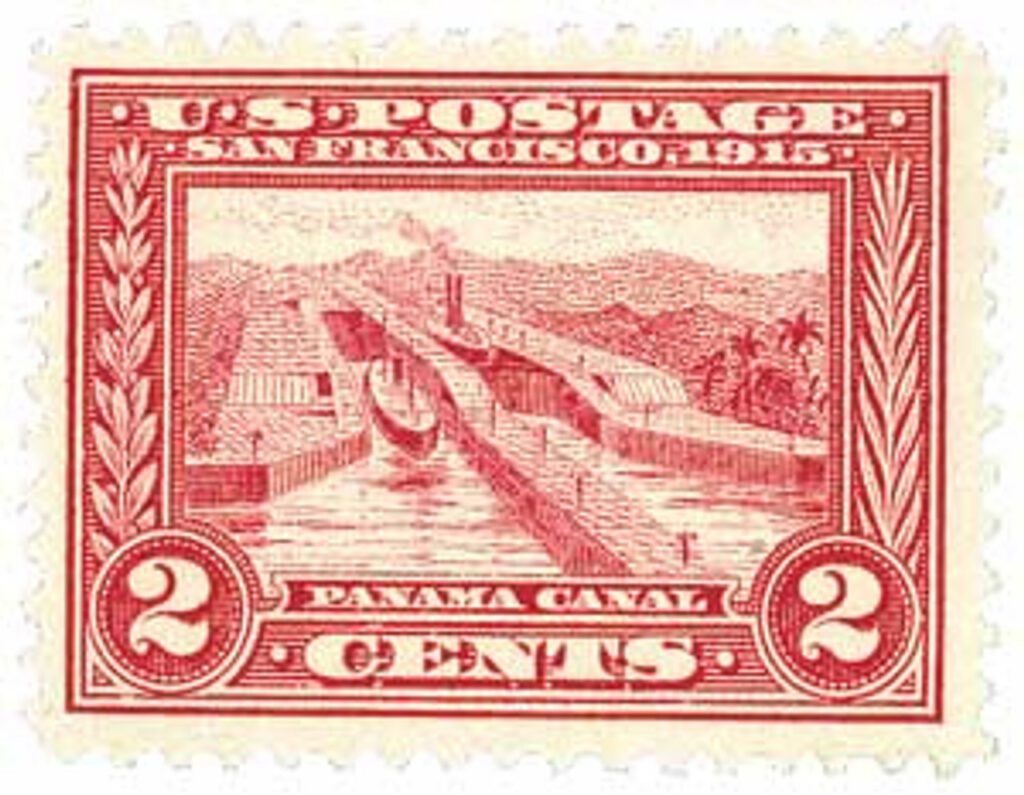
The construction was an arduous undertaking, costing the US $375 million and 5,600 lives. Over the course of the 10-year project, over 75,000 people from the US, Barbados, Martinique, Guadeloupe, and other nearby islands braved the harsh conditions to help make the canal a reality.
A grand celebration was to be held on August 15, 1914, to celebrate the official opening of the Panama Canal. A fleet of international warships was to assemble off Hampton Roads, Virginia. From there, they would travel through the Panama Canal to San Francisco for the Panama-Pacific International Exposition.
However, World War I intervened. The grand opening was a modest affair. There were no international dignitaries in attendance, although Colonel Goethals watched from a railcar as the cement-carrying American steamship SS Ancon traveled the canal.
When it first opened, the canal saw annual traffic of about 1,000 ships, and that number rose to over 14,000 in the 2000s. The canal has been updated and expanded over the years and the average ship takes a little over 11 hours to get through the locks.
Find lots of Canal Zone stamps here.
| FREE printable This Day in History album pages Download a PDF of today’s article. Get a binder or other supplies to create your This Day in History album. |
Discover what else happened on This Day in History.

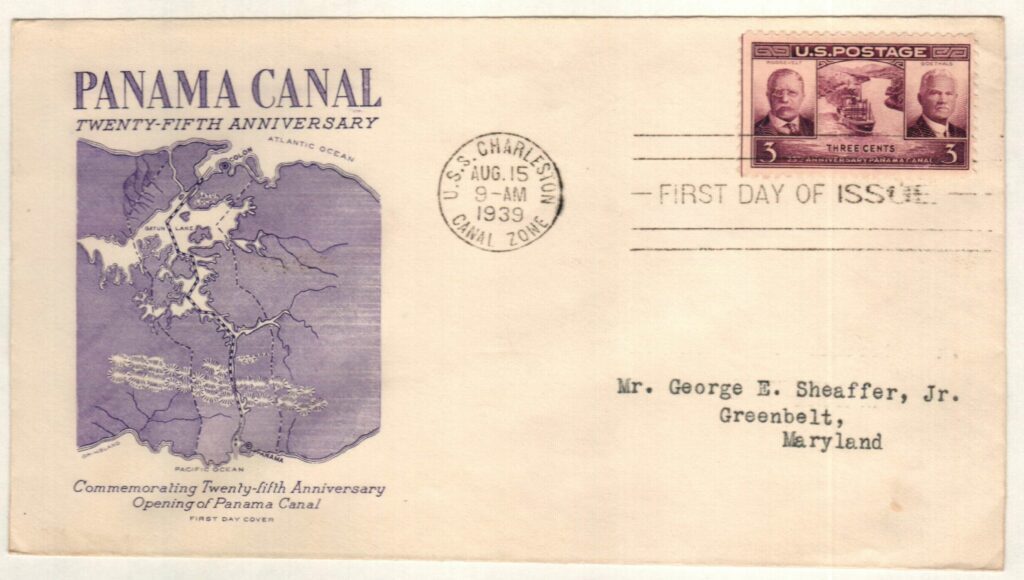
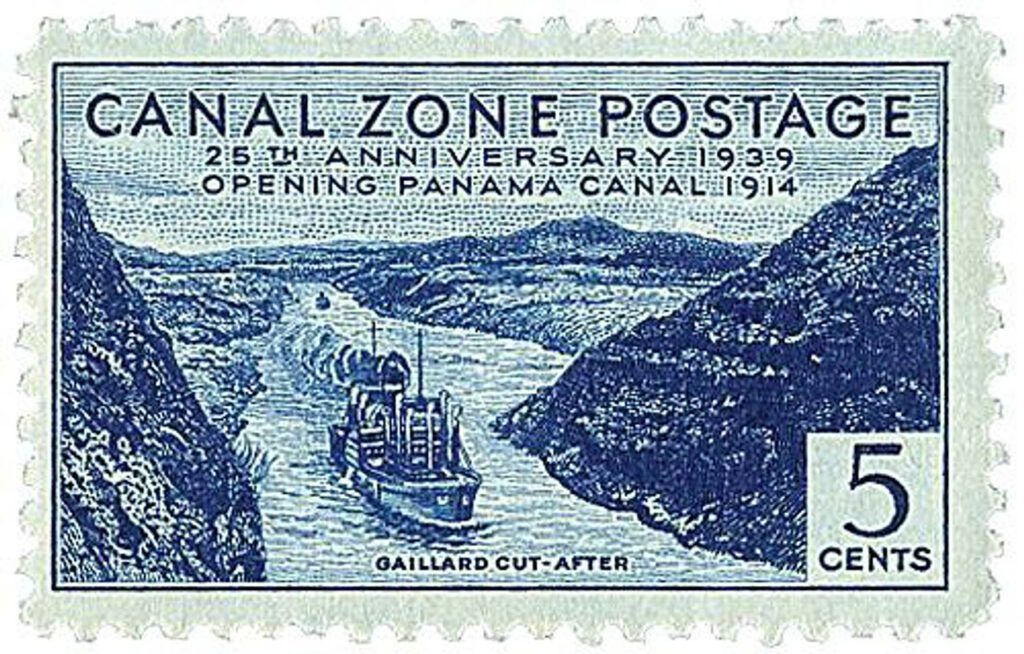
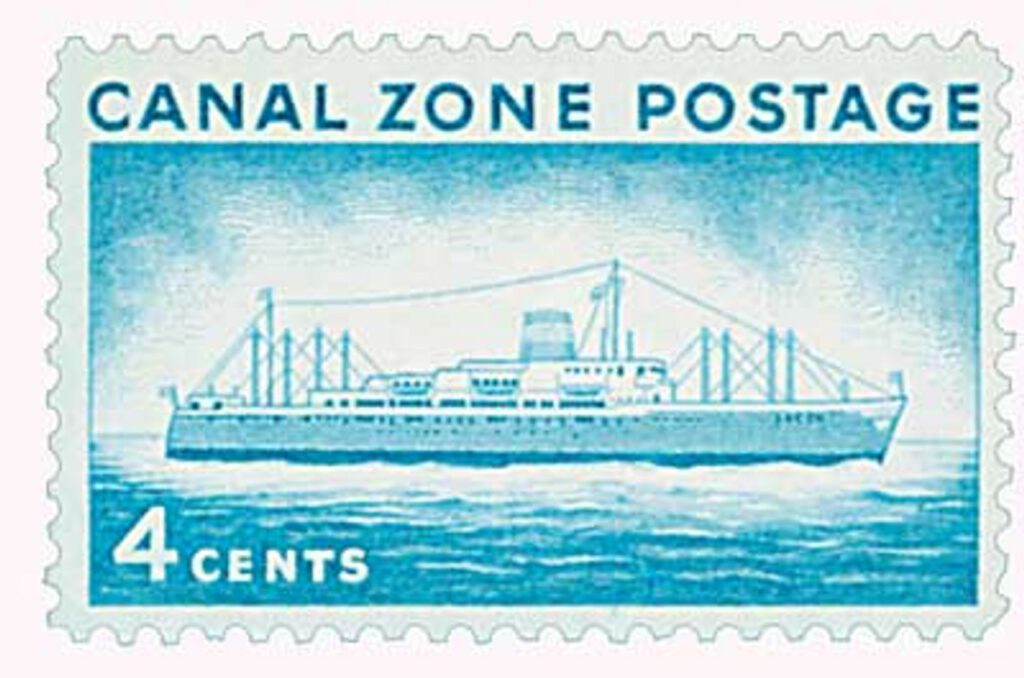
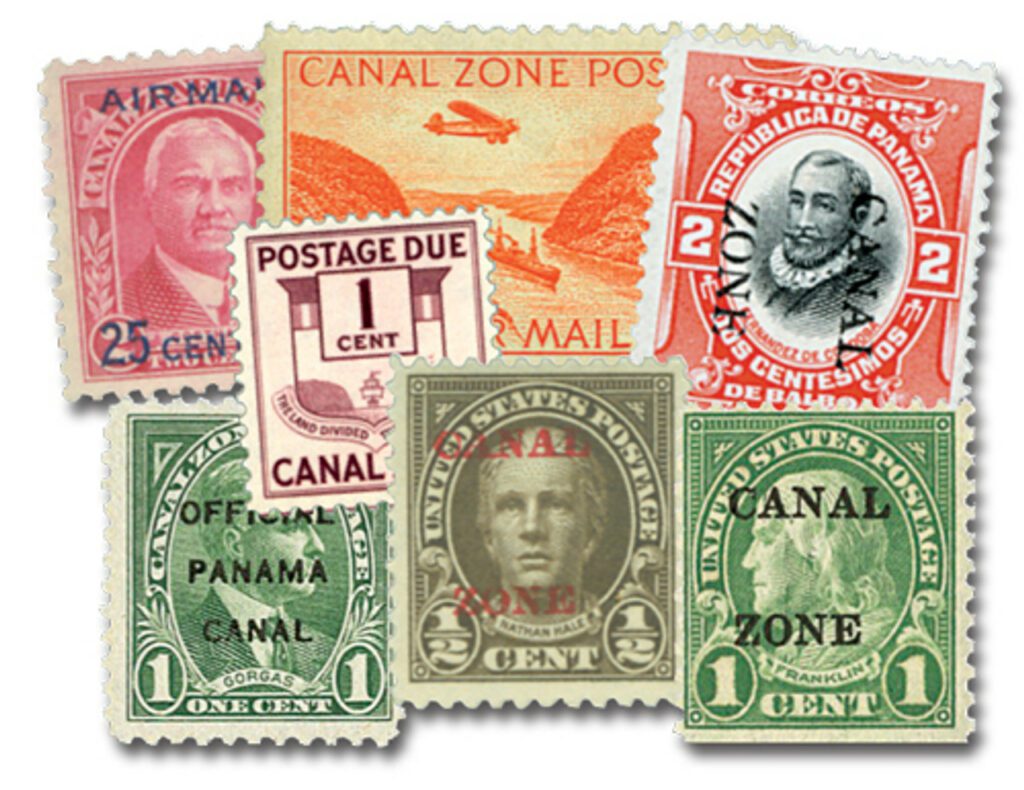
Thanks for the information, Don and the Mystic team. Always look forward to reading each days History lesson and seeing the associated stamp material.
Look forward to it each day! Am assembling an album and will order the stamps on an off-rainy day, rather than one at a time, probably at the end of each month. 🙂
Great information
I like the idea about the History of the Stamp, You see the Stamp, but you don’t know nothing about it’ Great Program.
Thanks Grant
Enjoyed this piece-I began collecting Canal Zone stamps while stationed in Panama while in the US Navy -the canal is an amazing engineering event
Do you have prices for the featured stamps?
Hi Judy,
Yes we do. Just click on the images in the article. The images are links to the page where you can learn even more about the stamps and buy them, too.
Thank you for these historical visits!
Too bad that this technique cannot be implemented in the History/Social Studies public school systems. I do believe that this is a better tool than listening to a teacher ramble on, and on, and on.
I am really enjoying your “This Day in History” series as I enjoy reading history.Someone is doing a lot of work putting together this series. Perhaps this series could eventually be put into book form.
These “This Day in History” articles should be required reading/teaching in the 5th or 6th grade. Kids should be old enough in that age group to appreciate history. I’ve read these articles since you started a couple of weeks back and although I knew pretty much everything you mentioned in the articles, some aspects, like how much it cost in money and lives to build the canal are things that I had forgotten. My daughter in law teaches the 3rd grade and I will pass this on to her. And maybe, just maybe, some of these kids may get interested in stamp collecting as well.
Keep this going. Thanks
Also this is the 80th annerversary of the airplane crash in Borrow,Alaska that killed Will Rogers and Wiley Post.
This feat,as can be well-said, changed the course of history to come.
This was a great day in U.S. History and a great day for the world.
This Day in History… Great idea! My grandfather was attached to an outfit in the Dominican Republic until 1923. Their goal was to protect the Canal from being attacked during the Great War. After that war, the protectors were disbanded and returned home.
I look forward to your daily educational – historical moment. Thank you!
Great stories over a cup of coffee in the morning. Keep them coming! It would be nice for you to publish a story on how Mystic Stamp works. Where do you get your stamps? How are they all categorized and actually shipped to customers? How do you take all the pictures of stamps? A video of your facility would be great. Just some ideas for people who can not travel to Camden.
Thanks for your Day In History and for the perfect order history on my account.
Love MY day in history from Mystic. Look forward to it each day.
I traveled to Panama on the Cristobal, the only remaining ship which was a ship which carried supplies and Canal Zone employees to Panama. I traveled as the ships doctor and my wife, Gerry was able to go along with me. It was like a cruise and we enjoyed the voyage very much. We took the train from Cristobal to Panama City. My good friend, Dr Manuel Roy who was a native of Panama met us at the train and showed us a marvelous time while we wre there for two days. We were able to see much of the canal while on the train and also got to see the docks and the “mules” which maneuver the ships thru the locks.